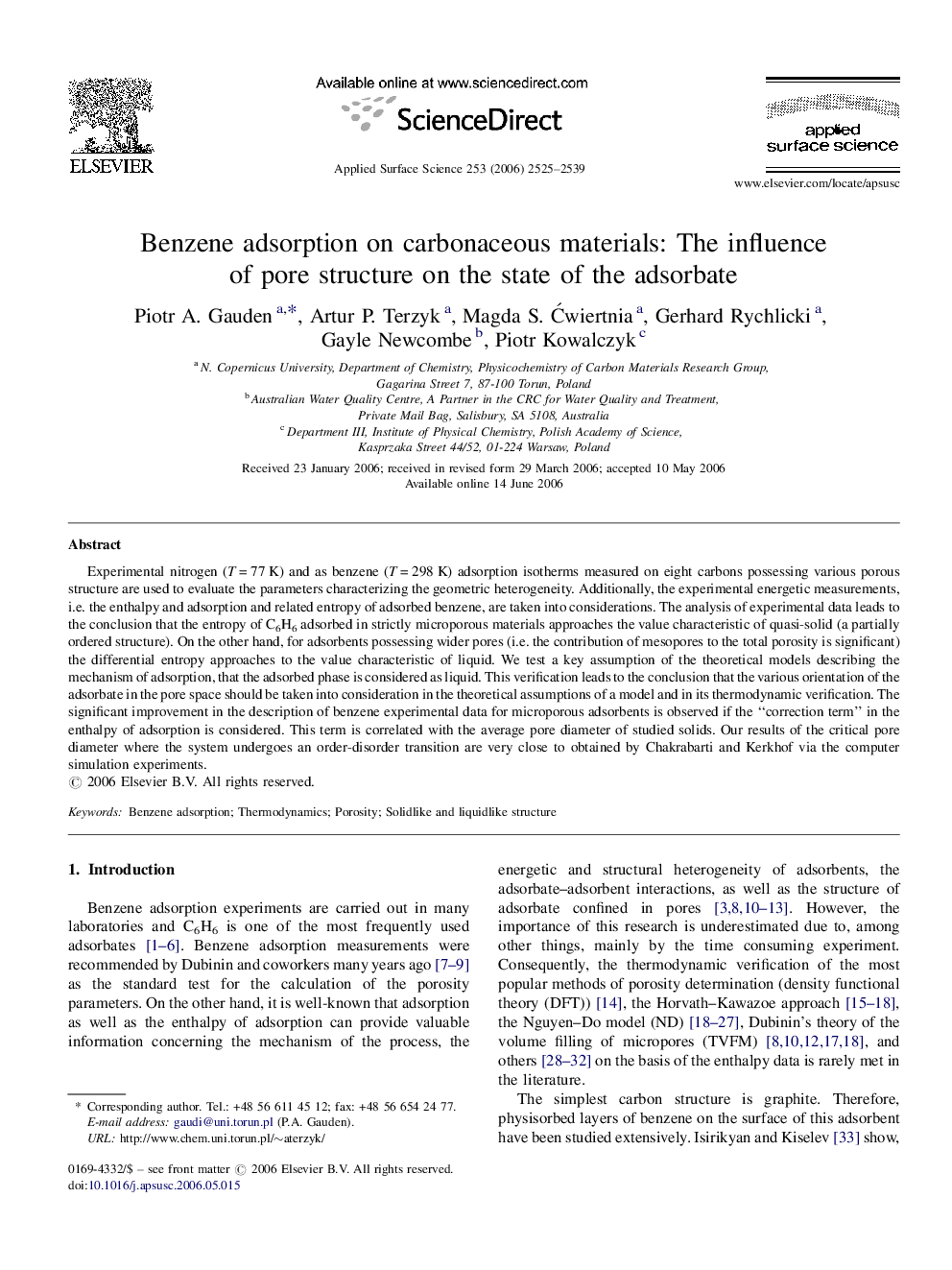| Article ID | Journal | Published Year | Pages | File Type |
|---|---|---|---|---|
| 5369926 | Applied Surface Science | 2006 | 15 Pages |
Experimental nitrogen (TÂ =Â 77Â K) and as benzene (TÂ =Â 298Â K) adsorption isotherms measured on eight carbons possessing various porous structure are used to evaluate the parameters characterizing the geometric heterogeneity. Additionally, the experimental energetic measurements, i.e. the enthalpy and adsorption and related entropy of adsorbed benzene, are taken into considerations. The analysis of experimental data leads to the conclusion that the entropy of C6H6 adsorbed in strictly microporous materials approaches the value characteristic of quasi-solid (a partially ordered structure). On the other hand, for adsorbents possessing wider pores (i.e. the contribution of mesopores to the total porosity is significant) the differential entropy approaches to the value characteristic of liquid. We test a key assumption of the theoretical models describing the mechanism of adsorption, that the adsorbed phase is considered as liquid. This verification leads to the conclusion that the various orientation of the adsorbate in the pore space should be taken into consideration in the theoretical assumptions of a model and in its thermodynamic verification. The significant improvement in the description of benzene experimental data for microporous adsorbents is observed if the “correction term” in the enthalpy of adsorption is considered. This term is correlated with the average pore diameter of studied solids. Our results of the critical pore diameter where the system undergoes an order-disorder transition are very close to obtained by Chakrabarti and Kerkhof via the computer simulation experiments.
